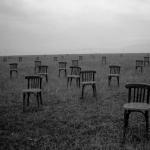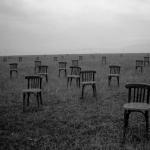IN Chinese very simple grammar, and tenses are much simpler than in many other languages. Very often, tenses are determined by context, for example, using words that indicate time: 明 míng 天 tiān (tomorrow), 上 shàng 星 xīng 期 qī (last week), 今 jīn 年 nián (current year), etc.
Since words in Chinese do not change in any way, tenses are conveyed using particles. The most commonly used past tense particle is the particle 了 le.
The particle 了 le can appear after a verb or at the end of a sentence.
The particle 了 le after the verb indicates that the action took place and answers the question “what did you do?”
Let's compare the offers:
If the particle 了 le is at the end of the sentence, then we will translate the sentence, answering the question "what did you do?".
Let's compare:
In some cases, even in sentences in the past tense, the particle 了 le is not placed, namely, if the sentence talks about a repeated action in the past or if there is no indication of the completion of the action. Such sentences often contain words that already indicate the past tense.
For example:
- Previously, he often went to work by subway. (a repeated action in the past indicates the past tense以 yǐ 前 qián (earlier) )
(last year) Last year I studied Chinese in China. (there is no indication of the completion of the action, the past tense indicates去 qù 年 nián (last year) )
The particle 了 le at the end of a sentence always indicates the past tense, but is not always used in past tense sentences. If we are discussing an already known situation (that is, the action or event is not introduced for the first time) or if we are talking about successive events in the past, then the particle 了 le at the end of the sentence can be omitted.
For example:
昨 Zuó 天 tiān (yesterday) 中 zhōng 午 wǔ (afternoon) 爸 bà 爸 ba 去 qù 市 shì 中 zhōng 心 xīn (downtown) , 晚 wǎn 上 shang (evening) 去 qù朋 péng 友 you (friend) 家 jiā ( house) .- Yesterday at noon dad went to the city center, and in the evening he went to a friend’s house.
(Chinese)午 wǔ (after lunch) 看 kàn (watch) 电 diàn 视 shì (TV) 。– On Saturday, in the morning, the child studied Chinese, and in the afternoon he watched TV.
Important!
The particle 了 le is not placed after verbs of feelings and after verbs that do not indicate action, for example: 在 zài (to be in) , 是 shì (to be) , 爱 ài (to love) , 喜 xǐ 欢 huan (to like) , 希 xī 望 wàng (hope), etc.
For example:
上 shàng (past) 星 xīng 期 qī 一 yī (Monday) 是 shì 我 Wǒ生 shēng 日 rì (Birthday) 。 – Last Monday was my birthday.
去 qù 年 nián (last year) 我 Wǒ 在 zài 欧 ōu 洲 zhōu (Europe) 。 – Last year I spent in Europe.
(formerly) Dad used to like riding a bike.
Negation
With denial everything is much easier. Regardless of where the particle 了 le is in an affirmative sentence, the diagram negative sentences in the past tense is the same. It is important to remember that the negative particle 不 bù is not used in past tense sentences. And the most important thing is that in negative sentences of the past tense the particle 了 le is not used, since 没 méi (有 yǒu) already indicates the past tense.
noun 1+ 没 méi (有 yǒu) + verb (+ noun 2)
有 yǒu is in parentheses because it can be omitted.
我 Wǒ 没 méi 买 mǎi (buy) 书 shū (book) 。 – I didn't buy the book.
他 Tā 没 méi 有 yǒu 起 qǐ床 chuáng (wake up) 。 – He didn’t wake up.
爸 Bà 爸 ba 没 méi 有 yǒu 去 qù 大 dà 使 shǐ 馆 guǎn (embassy) 。 – Dad didn't go to the embassy.
妈 Mā 妈 ma 没 méi 去 qù 火 huǒ 车 chē 站 zhàn (station) 买 mǎi 票 piào (ticket) 。 – Mom didn’t go to the station to buy tickets.
If the negation is preceded by the word 还 hái (yet), then the particle 呢 ne is often used at the end of the sentence. The construction “还 hái 没 méi (有 yǒu) …… 呢 ne” indicates that the action has not yet happened, but should happen soon.
For example:
经 Jīng 理 lǐ (director) 还 hái 没 méi 有 yǒu 来 lái 呢 ne 。 – The director hasn't arrived yet.
客 Kè 人 rén (guest) 还 hái 没 méi 走 zǒu (to leave) 呢 ne 。 – The guests have not left yet.
孩 Hái 子 zi (child) 还 hái 没 méi 吃 chī (eat, eat) 午 wǔ 饭 fán (dinner) 呢 ne 。 – The child hasn't had lunch yet.
Question
The easiest way to ask general question– add an interrogative particle 吗 ma at the end of the sentence.
For example:
你 Nǐ 买 mǎi 了 le 手 shǒu 机 jī (mobile phone) 吗ma? – Did you buy a phone?
你 Nǐ 们 men 喝 hē (drink) 了 le 咖 kā 啡 fēi (coffee) 吗 ma ? – Did you drink coffee?
父 Fù 母 mǔ (parents) 走 zǒu (to leave) 了 le 吗 ma ? – Are your parents gone?
But for interrogative sentences In the past tense, questions using 没 méi 有 yǒu (not to have) are more typical.
没 méi 有 yǒu is placed at the end of the sentence, but unlike negative sentences, the particle 了 le after the verb is retained.
We get the following diagram:
noun 1 + verb+了le+ noun 2+ 没 méi 有 yǒu
For example:
你 Nǐ 买 mǎi 了 le 手 shǒu 机 jī (mobile phone)没 méi 有 yǒu? – Have you bought a mobile phone?
你 Nǐ 们 men 喝 hē 了 le 咖 kā 啡 fēi (coffee) 没 méi 有 yǒu ? – Did you drink coffee?
父 Fù 母 mǔ (parents) 走 zǒu (to leave) 了 le 没 méi 有 yǒu ? – Are your parents gone?
If you noticed, all sentences into Russian are translated the same way. To determine how to translate a verb ( "what did you do?" or "What did you do?"), you need to pay attention to the context.
That's all from theory for today. We will practice grammar and new vocabulary in exercises. Advice: do not move on to the next lesson if something remains unclear or unlearned.
It's good when there's nowhere to rush. Happy people, they say, don’t watch the clock. But in our hectic life, everything is scheduled by the hour. And when traveling, it is especially important to know what time is it now so as not to miss the plane, for example. This article will help us correctly answer the questions “what time is it?”, “What time...?”.
Please note that we will learn not so much Chinese words as Chinese phrases - this is more effective.
Learning to talk about time in Chinese:
| 现在几点? | Xiànzài jǐ diǎn? | What time is it now? (lit. now + how much + hour) |
| 七点 | qī diǎn | 7 o'clock |
| 七点零五(分) | qī diǎn líng wǔ (fēn) | 7 hours 05 (minutes) (lit. seven + hour + 0 + 5) |
| 七点十五(分) | qī diǎn shíwǔ (fēn) | 7 hours 15 (minutes) |
| 七点一刻 | qī diǎn yī kè | 7 and a quarter |
| 七点半 | qī diǎn bàn | 7.30 or 7 and a half (literally 7 + hour + half) |
| 七点四十五(分) | qī diǎn sìshíwǔ (fēn) | 7 hours 45 (minutes) |
| 七点三刻 | qī diǎn sān kè | 7 and three quarters |
| 七点五十五(分) | qī diǎn wǔshíwǔ (fēn) | 7 hours 55 (minutes) |
| 差五分八点 | chà wǔ fēn bā diǎn | five to eight |
| 九点左右 | jiǔ diǎn zuǒyòu | about 9 o'clock |
| 还没到九点 | hái méi dào jiǔ diǎn | It's not 9 o'clock yet |
| 快到九点 | kuài dào jiǔ diǎn | soon it will be 9 o'clock |
| 正好九点 | zhènghǎo jiǔ diǎn | exactly 9 o'clock |
| 才到九点 | cái dào jiǔ diǎn | 9 o'clock just struck |
| 时间 | shíjiān | time, period of time |
| 时候 | shihou | time; during the time when |
| 小时 | xiăoshi | hour |
| 分钟 | fēnzhōng | minute |
| 到时间了 | dào shíjiānle | it's time, the time has come |
Example sentences
- 现在三点十分 (Xiànzài sān diǎn shí fēn) - It's 3:10 now.
- 你几点上班?(Nǐ jǐ diǎn shàngbān?) - What time do you have to go to work?
- 我八点上班 (Wǒ bā diǎn shàngbān). - I have to work at eight.
- 办公时间 (Bàngōng shíjiān). - Working hours.
- 营业时间 (Yíngyè shíjiān). - Working hours (business, trade + time)
Location in a sentence
Note! If words describing time answer the question WHEN, then they are put before verb.
And if the indicated time implies DURATION, then it is put after verb.
Moreover, this applies to the description of time in general: hours, days, times, etc.
Examples:
- 我六点回家 (Wǒ liù diǎn huí jiā). - I'll be back home at 6 o'clock (lit. I'll be back home at 6 o'clock). - WHEN.
- 我听了两个小时 (Wǒ tīngle liǎng gè xiǎoshí). - I listened for 2 hours. - DURATION.
Notice also how the last sentence changes when the object appears:
- 我听他听了两个小时 (Wǒ tīngle liǎng gè xiǎoshí). - I listened to him for 2 hours. - DURATION.
Hieroglyph 刻 - quarter of an hour
This is just one of the many meanings of this hieroglyph. The key of the character 刂 - knife - gives the character also the meaning to cut. Below in the subtitle " Interesting Facts..." you can find out the history of this hieroglyph. The knife in the hieroglyph is connected with 亥 (hài) - the twelfth cyclic sign and is closely related to the designation of time. For example, the second big hour nights (from 9 to 11 pm) is called 亥时 - Pig. The same hieroglyph denotes the year of the Pig.
Hieroglyph 时 - hour
In the traditional spelling of this character - 時 - one can see the connection in the ancient Chinese concept of time and Agriculture. The key 日 (rì) - the sun - is connected to the earth 土 and the measure of length 寸. In ancient times, when everything depended on the harvest, time meant not only money, but also life. Now 时 means an ordinary hour, but according to ancient Chinese timekeeping, 时 was twice as long.
Interesting facts about time in ancient and modern China
- Although the territory of China is located on four time zones, nevertheless, throughout the country there is a single time that coincides with Beijing - 4 hours difference with Moscow.
- In ancient China, the day was divided not into 24 (小时 - xiăoshí - small hour), but into 12 time periods - 时辰 (shíchen), or large hours.
- The five night periods were called genami (更 - gēng), and lasted from 7 pm to 5 am.
- Another division of the day used in ancient China was the division into 100 periods 刻 (kè), which were measured by a water clock. Each 刻 was divided into 60 分 (fēn). As a result, in ancient Chinese day there were 12 shichen, 100 ke and 6000 fen.
- The modern value of 刻, equal to 15 minutes, or 1/96 of a day, acquired thanks to the Jesuits, who introduced Western timekeeping in China in the 17th century.
- The ancient Chinese measured time with water clocks and sun clocks. The water clock was a round bowl with a hole in the bottom, floating in a vat of water and gradually filling up. And one Chinese emperor in the 13th century made himself a sundial 40 steps high. An amazing clock for astronomical observations was created by the Chinese master Su Song. This is a whole 12-meter tower of a water-controlled clock, an armillary sphere and a celestial globe.
Click on the picture to open and download a poster in A4 format on the topic What time is it now? in Chinese
I. Ways of expressing time adverbs in Chinese.
The adverbial tense in Chinese can be expressed:
1. Numeral-subject phrase(numeral + noun):
-- dates
In Chinese, the following word order is strictly observed when indicating the date:
年 –––– 月 –––– 日 (号)
year month day
At year designation digits are not indicated, zeros are retained.
For example: 1905 一九零五年
1989
2003
Note :
In modern spoken language, there are two variants of the 2000s reading:
Traditionally, the numbers that make up the year are said in a row;
After the number 二, add the place number 千, and then pronounce the remaining numbers in a row: 二千零四年 - 2004.
Calendar months in Chinese they are designated as follows:
一月 January 二月 February 三月 March 四月 April
五月 May 六月 June 七月 July 八月 August
九月 September 十月 October 十一月 November 十二月 December
Note:
If the account is kept according to lunar calendar, then the first month of the new year is designated 正月, the last month of the year is designated 腊月, all other months retain their designation.
Quarters in Chinese they are designated as follows: cardinal number + 季度 or ordinal number + 季度:
(第)一季度 first quarter (第)二季度 second quarter
(第)三季度 third quarter (第)四季度 fourth quarter
Dates will be composed according to the scheme: number + 日 or 号.
For example: Third 三日三号
Eighteenth
Twenty-fourth
Thus, the date in hieroglyphic notation will look like this:
Eyelids are indicated as follows: 公元 + cardinal number + 世纪, when talking about centuries AD, 公元 is usually omitted. If we are talking about centuries BC, then 公元前 + cardinal number + 世纪.
Questions by dates are specified as follows:
-- what date is today? 今天(是)几月几日(号)?
-- at what year? (在)哪一年?
Note:
When counting years And days counter word Not used.
For example: 三年 three years
five days
When counting months And weeks The counting word 个 is used.
For example: 九个星期 nine weeks
six months
-- days of the week
In Chinese " weeks"I" is written in three different ways:
Note:
-- 礼拜 more inherent colloquial speech, and 礼拜 itself can be used to mean “Sunday”.
As for the calendar days of the week, they are indicated as follows:
Monday
Tuesday
Wednesday
Thursday
Friday
Saturday
Sunday
Sunday
In a five-day week, Saturday and Sunday are collectively called 双休日 or 大礼拜.
The question of what day of the week it is is asked as follows: 今天星期几? or 今天礼拜几?
-- hours, minutes, seconds
To indicate hours, minutes, seconds, the following words are used:
钟 what time is it (counting word 点)
钟头 (钟点) hour how long (count word 个)
分 minute
秒 second
Questions about time are specified as follows:
What time is it?
几点钟了? What time is it?
几个钟头(小时,钟点) What time is it?
什么时候? When?
For answer the following words are used:
半 half
刻 quarter
过 to pass... (used optionally)
For example: 2:00 两点(钟)
2:05 两点(过)五分
2:12 pm(分)
2:15 pm
两点十五(分)
2:30 pm
两点三十(分)
2:45 pm
两点四十五(分)
2:55 两点五十五(分)
3:00 pm(钟)
Note:
The following temporal adverbs can be used to indicate the time of day:
早上 in the morning, early in the morning (from 3:30 a.m. to 8:00 a.m.)
早晨 in the morning, morning
上午 before noon, first half of the day (from 8:00 to 11:30 am)
白天 in the afternoon
中午(午) at noon (from 11:30 am to 1:30 pm)
下午 afternoon, afternoon (from 1:30 pm to 6:00 pm)
晚上 in the evening (from 6:00 to 10:30 pm)
夜里 at night (from 10:30 pm to 3:30 am)
In Chinese, the future is translated as " 将来/jiānglái/future"
In Chinese, unlike in English There is no clear specific construction for expressing the future tense. And it is impossible to immediately learn to express the future tense. In this publication I will tell you several ways to form a sentence in the future tense.
At the moment, I have identified five main ways to express the future tense:
1 way. Using modal verbs "要", "将" and "会"
Modal verb " 要 / yào / desire, want, demand»
The future tense can be formed using modal verbs. I will write about what modal verbs are in a separate publication. The verb “要” also belongs to modal verbs.
Often the verb "yào" is translated as "want", for example, in the sentence " I want to go for a walk».
But in some moments it carries an intonation of neediness, for example, in the sentence “ I need to go to the hospital." In the last sentence, this is already a clearly expressed need.
Naturally, such a need will be fulfilled in the future.
Examples:
Modal verb " 将 / jiang1 / intend to accomplish something»
The meaning of this modal verb has the same meaning as the modal verb "要", but is more often used in newspapers, texts and in formal speech. When using this verb, it is assumed that the action will take place in the future.
 Modal verb " 会 /hui4/ to be able to do something»
Modal verb " 会 /hui4/ to be able to do something»
Verb " 会 "also belongs to the modal group and is used before verbs. The most commonly used meaning of this word is " be able to do something" or " have the ability to do something" For example, in the sentence " I speak Chinese» this particular verb will be used to express ability. In Chinese the sentence would be "我会汉语。".
The modal verb "会" can also be used to express the future tense. And in such sentences it will be translated as “will”, “will” depending on the subject.
Examples:
Method 2. Using the adverbs "将要" and "将会"
Both dialects contain the character “将”. I would like to note that these adverbs are more often used in textual and official speech.
 Adverb " 将要 / jiāngyào / in the future, about to happen»
Adverb " 将要 / jiāngyào / in the future, about to happen»
Adverb " “将要” indicates that the action will occur in the near short term.
Examples:
| The sale is about to start. | 拍卖会将要开始了。 | Pāimài huì jiāngyào kāishǐle. |
| The bus is about to leave. | 公共汽车将要出发。 | Gōnggòng qìchē jiāngyào chūfā. |
3 way. Using future tense adverbs
« 明天", "下星期", "下次", "明年", "后年", "大后年" and "下个月"
This is the most common colloquial way of expressing sentences in the future tense. You can only use the adverbial tense in a sentence, and this will already indicate that the sentence refers to the future tense.
You can use the following circumstances:
Examples:
4 way. Using the design
« 块。。。了", "要。。。了", "快要。。。了", "就。。。了" and "就要。。。了".
| 块。。。了 | Kuài...Le |
| 要。。。了 | Yào...Le |
| 快要。。。了 | Kuàiyào...Le |
| 就。。。了 | Jiù...Le |
| 就要。。。了 | Jiù yào...Le |
 The constructions are constructions of the future tense. They say that the action will be carried out soon. There are practically no differences between them. Some of them are the most common in conversational practice.
The constructions are constructions of the future tense. They say that the action will be carried out soon. There are practically no differences between them. Some of them are the most common in conversational practice.
I also want to note that sentences using these constructions have an exclamatory meaning.
Examples:
5 way. Using verb duplication .
Verbs are often duplicated in Chinese. For example, "看看" or "看一看", "数数" or "数一数", "试试" or "试一试". If such duplications are used without the past tense particle “le”, then the sentences have a connotation of the future tense. But as far as possible in the near future.
Examples:
In this article, I described only the most pronounced moments of the future tense in Chinese. In fact, there are many nuances to forming the future tense in Chinese. We discuss all the nuances in detail in our lessons.
With this I say goodbye to you!




